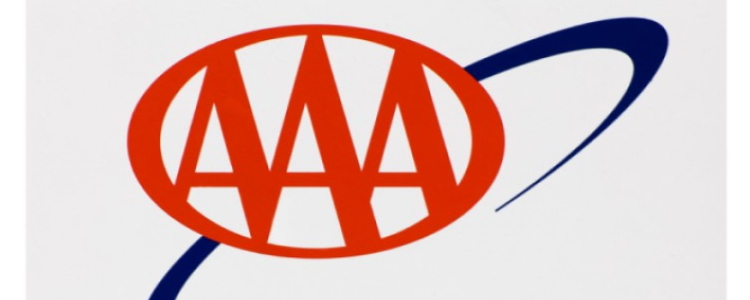When you finance a vehicle with an auto loan, you're required to carry full coverage car insurance. No matter if your credit score is good or bad, you have to comply with this part of your contract. If you don't, a lender could issue you a force-placed auto insurance policy.
What Is Force-Placed Car Insurance?
 Force-placed car insurance is sometimes called lender-placed auto insurance. It's an insurance policy that’s put in place by a lender if your coverage lapses, doesn't include enough protection for the vehicle, or you simply don't get insurance as promised.
Force-placed car insurance is sometimes called lender-placed auto insurance. It's an insurance policy that’s put in place by a lender if your coverage lapses, doesn't include enough protection for the vehicle, or you simply don't get insurance as promised.
This happens because a lender needs to protect their property – you don't technically own a financed car until you make the last payment and the lender's name is removed as a lienholder from the title.
Force-placed insurance only takes the lender's needs into consideration, and doesn't account for your budget. Lender-placed insurance is typically more expensive than a policy you would get on your own, but you're still expected to foot the bill.
Are You in Danger of Lender-Placed Auto Insurance?
The only way you can end up with a force-placed insurance policy on your vehicle is if something happens to your coverage. As a borrower, you're expected to take a certain level of care with a car, since it’s still the lender’s asset until you complete the loan.
This can be easier when you're financing a new vehicle, as new cars typically come with a warranty which covers certain mechanical issues, regular services, and repairs. Having these expenses covered may leave you more money in your budget to afford auto insurance, which is more expensive on new vehicles.
However, you still have to carry full coverage insurance on used cars. This means you can't just get your state minimum coverage amount and call it good – especially if your state only requires personal liability or property damage policies. Once you complete the auto loan, you can choose whatever policy you want, as long as it meets your state’s minimum qualifications.
Can You Remove Force-Placed Car Insurance?
In order to have lender-placed insurance removed, you need to get your own car insurance policy. Once you have gotten this or re-instated your coverage, you can contact the lender with your proof of insurance and have the force-placed insurance removed. Lenders may be hesitant to remove their coverage since you've already had an insurance slipup once, so be sure to check your contract for details and stipulations regarding this procedure.
When you're choosing a policy, be sure it meets your lender's minimum full-coverage requirement, as it likely differs from your state's. As a general rule, most states don't require full coverage, so just getting your state's minimum insurance won't satisfy your lender.
Though you don't have to choose the most expensive, top-tier policy your insurance company provides, you need to choose coverage that has a high enough premium to cover the value of your vehicle.
Even if you only let your insurance lapse for a month, be sure to pay the entire cost of your monthly auto loan payment, including the charge for lender-placed insurance. Not doing so could result in consequences such as default and repossession.
Auto Insurance Coverage for Financed Cars
Usually, full coverage means getting some combination of liability and collision insurance, which covers all the bases no matter how damage occurs or whether or not you're at fault. Insurance coverage minimums vary by state and insurance company, so it's important to know what's required where you live.
The common types of car insurance you could have in order to satisfy your lender requirements are:
- Collision insurance – This covers damages that occur due to an accident, whether you're at fault or not.
- Liability insurance – Covers medical bills for anyone injured in an auto accident where you're at fault, along with property damage.
- Comprehensive insurance – This covers damage from non-vehicle collisions, such as animal strikes, falling trees, hail, and theft.
- Uninsured/Underinsured motorist – Covers you if you're in a collision with a driver who isn't insured, or that doesn't carry enough coverage for the amount of damage done to your car.
Combining the right mix of coverage to meet the lender’s requirements is key to avoiding force-placed insurance. When you're designing your policy, make sure that you have enough coverage and that your premiums meet the level of coverage you need.
If you aren't sure where to go for auto insurance, you can check out our trusted partner here. They can help you view and compare offers online.
What if I Can't Afford My Car Insurance?
If you can't afford to insure your vehicle with full coverage while you're financing it, it may be time to trade in your car for something more affordable all around.
Financing an affordable, reliable, and fuel-efficient used vehicle can save you money in insurance costs, and at the gas pump as well! What's more is that if you're currently financing a more expensive car that has equity, you may be able to use that trade-in to cover your down payment on another vehicle.
When you need to cut down on your costs, find another car, and get financed with a lender that can work with your unique credit situation, look no further than Auto Credit Express. We've been matching credit-challenged consumers with local special finance dealerships for over 20 years, and we want to help you, too. Simply fill out our free auto loan request form, and we'll get to work for you!
















